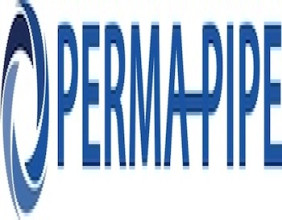The benefits of anaerobic digestion for recycling various kinds of organic farm waste are far-reaching — including waste management, renewable energy generation, GHG reduction, economic advantages and agricultural sustainability.
Vanguard Renewables’ Farm Powered® anaerobic-digestion process recycles organic waste — mainly, food and beverage waste from the manufacturing sector and dairy cow manure — into renewable natural gas (RNG). It’s a pretty simple process: Think of it as a giant CrockPot that is full of methanogens, which are naturally found in cow manure, that gobbles up the food waste and the manure and creates biogas. That biogas is then cleaned, upgraded and becomes renewable natural gas — a drop-in replacement for fossil-based natural gas and a powerful tool to fight climate change.
Waste is only waste if we waste it
Food waste is a fact of life, whether it be at home or during production. If a cookie manufacturer added baking powder instead of baking soda to its batter, that whole industrial batch of cookies would need to be discarded; that’s a lot of cookies that would be sent to the landfill instead of feeding those in need.
For dairy farmers, manure presents some smelly challenges. As with food production and food waste, you can’t have dairy cows without manure. But there are several ways that farmers and food and beverage companies alike can handle their unavoidable waste. We believe that recycling them together through anaerobic digestion provides a sustainable solution for both.
There are many benefits of recycling food and crop waste and cow manure through anaerobic digestion — creating positive impacts on waste management, renewable energy generation, greenhouse gas (GHG) reduction and sustainable agriculture.
Waste management and environmental benefits
Food and other organic farm waste and cow manure both present waste-management challenges. When it comes to manure from dairy cows, The USDA Natural Resources Conservation Service estimates that “the manure from 200 milking cows produces as much nitrogen as sewage from a community of 5,000 to 10,000 people.” While this manure is most commonly used as a beneficial source of nutrients for crops, inclusion of an anaerobic digester reduces emissions associated with manure storage and generates renewable energy.
Improper disposal of organic waste leads to harmful methane emissions and wasted resources. However, through anaerobic digestion, these organic materials can be efficiently converted into renewable energy and valuable byproducts — such as a digestate that can be used as a low-carbon and nutrient-dense fertilizer; and the solids, which become bedding for the herd.
Biogas is a key product of anaerobic digestion, comprising primarily methane and carbon dioxide. By capturing and utilizing biogas as a renewable energy source, we can reduce reliance on fossil fuels, combat climate change and lower GHG emissions. The methane recovered from organic waste is a potent greenhouse gas; and preventing its release through anaerobic digestion significantly mitigates its environmental impact.
Renewable energy generation
RNG can power homes, businesses, and even entire communities, reducing the dependence on fossil-fuel-based electricity. It can also be used for heat production in industrial processes, space heating or water heating. By displacing conventional, fossil-based heating fuels with RNG, we can reduce the carbon footprint of these applications — contributing to a more sustainable energy mix.
Recently, AstraZeneca and Vanguard Renewables entered a transformative partnership to enable the pharmaceutical giant to fuel all of its US operations with RNG by 2026; Waste Dive called the partnership as the “largest open-market RNG deal yet.” Partnerships like this could be a game-changer for companies that are trying to reach their net-zero targets, by decarbonizing their energy load.
RNG can also be upgraded to biomethane, a renewable natural gas, which can be used as a low-carbon fuel for vehicles. This presents an opportunity to decarbonize transportation and reduce GHGs in the transportation sector.
Agricultural sustainability and nutrient management
Dairy cow manure can be effectively managed through anaerobic digestion. Digestate, the liquid left after anaerobic digestion, is a nutrient-rich material that can be used as a fertilizer. Applying digestate to croplands replenishes soil nutrients, reduces the need for synthetic fertilizers, promotes regenerative-agriculture practices; and minimizes nutrient runoff, which can pollute water bodies.
The digestate can be another source of cost savings for our farmers since they no longer have to rely on traditional fertilizers. Many of Vanguard’s host farms have seen an increase in crop yields, which they believe is from the use of the digestate. Additionally, the solids that come from the pressing of the digestate can be used as bedding for the farmer’s herd, which is yet another cost savings for host farms. And minimizing waste and enhancing overall resource efficiency contributes to a circular economy.
Final thoughts
The benefits of anaerobic digestion for recycling various kinds of organic farm waste are far-reaching — encompassing waste management, renewable energy generation, GHG reduction, economic advantages and agricultural sustainability. By adopting anaerobic-digestion systems, farmers can contribute to a more resource-efficient future — where waste is minimized, renewable energy is created, and agriculture operates in harmony with the environment. It is crucial for stakeholders — including food producers, dairy farmers, waste-management entities and policymakers — to collaborate and invest in anaerobic-digestion infrastructure to harness the full potential of these organic waste streams.



